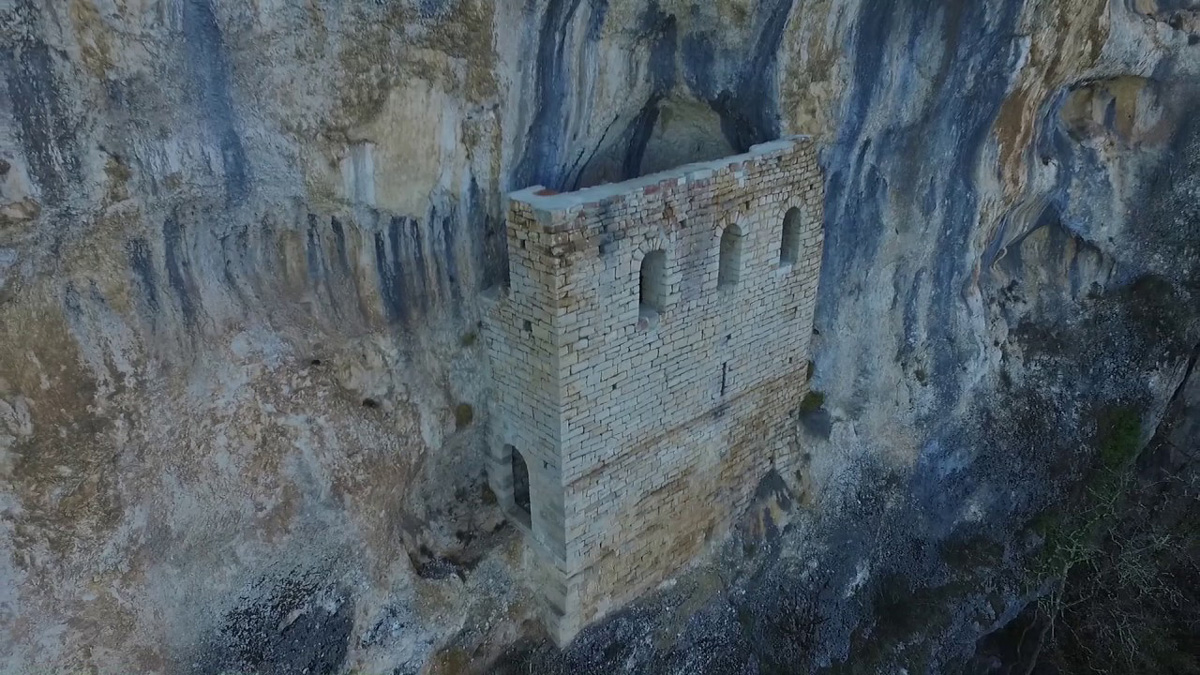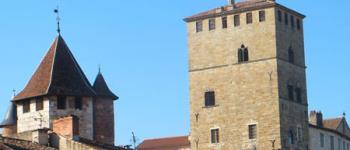
Brengues is a small rural village between the Causses and the valley. It has about 200 inhabitants and is part of the community of communes of Grand Figeac.
Brengues is also part of the Regional Natural Park of the Causses du Quercy.
A rich heritage
Despite its small population, Brengues has a rich heritage.
First of all, the church of Saint Saturnin, whose bell tower, built probably in the early Romanesque period, presents a rare architectural feature.
Indeed, the corners of the building are rounded, either because the technique of stone chaining was poorly mastered by the builders, or - and this is the most plausible reason - for economic reasons, as stone cutters were very expensive at the time.
Note the present entrance to the church, surmounted by a triangular pediment with an engraved motto celebrating the Holy Trinity. This type of entrance, reminiscent of the reformed temples, was perhaps built during the Wars of Religion, the parish of Brengues having chosen the Protestant side. Inside, numerous 18th century tombstones can be spotted among the floor tiles, proof that people continued to bury in the church until the eve of the Revolution.
The English Castle
Probably built in the 12th century, this castle, now inaccessible, is built against a particularly narrow rock shelter. This justifies the presence of two floors: the first floor which, including latrines, was to be used as a guard room and a noble floor, open on the valley, by three bays in full arch.
Despite its name, the castle has nothing to do with the English, the inhabitants would have used it to protect themselves during armed threats. It would even have been used as a place of detention during the Wars of Religion: the inhabitants of Brengues, converted to Protestantism, having made a specialty of kidnapping Catholics with ransom demands. Restored a few years ago, the castle is now the property of the commune.
Oppidum of Mas de Greil
Very little is known about this oppidum with its semicircular enclosure, probably built in the protohistoric period, as surface excavations have yielded few results.
However, the presence of a ditch, vestiges of defensive works as well as the dimensions of the enclosure: 300 m long, 5.30 m thick and 4 m high, lead us to believe that a large population could find protection there.
The Fountains of the Causse
Located on the Causse where water is scarce, these two fountains have different functions. The first one, covered by a stone vault, was used, because of its proximity to the neighboring village, as a drinking water supply place. The second, which has a greater flow, was developed both as a watering place for the herds and as a washhouse by the construction of a retention basin.
The door of the cliff
There were originally two gates, one on the east side and the other on the west side, which protected a refuge village whose ruins were still visible around 1830. In the same way, the control of this path, the only one allowing to circulate on this side of the Célé, was also to be used for the collection of taxes of passage.
In 1347, the lord of the place, while tensions and provocations between the English and the French were increasing, decided to fortify the still existing gate, by adding a cruciform archway allowing crossbow shooting...
Ayrissac
This hamlet is built on the remains of an important Gallo-Roman domain which extended on both sides of the Célé.
Every year during the ploughing season, the furrows of the fields reveal fragments of glass, bronze or ceramics. A lot of pieces found a few years ago, indicate that this Gallo-Roman complex was still active in the 4th century AD.
In the same way, many of the tiles found still bear the name of their maker who answered to the sweet name of Asina..., the donkey.
The Rock of Lagane
This cliff which overhangs Brengues, is pierced by numerous cavities of which at least two, at troubled times, were used as refuge by the inhabitants.
The first one, accessible only by ladder, is blocked by a wall of more than 2 meters high, making any attack impossible.
The other, located halfway down the cliff, could only be reached by a rope, suspended from a beam with a pulley, a system still visible at the beginning of the century. This cave, which seemed inaccessible, attracted many dreams - was there not talk of a treasure left by the English?
In spite of the excavations and the visits, it revealed nothing...
And also...
Close to Brengues, you can visit Figeac with its medieval town and writing museum, Rocamadour and the nearby Padirac chasm, Saint-Cirq-Lapopie, the rock cave of Pech-Merle and the prefecture Cahors with the famous Valentré bridge.
You can also indulge in sports activities, canoeing and kayaking, numerous hiking trails including the GR 65 variant of Santiago de Compostela, horseback riding, swimming in the Célé river or in the swimming pool of the Moulin Vieux campsite, potholing, mountain biking, all in a calm and wild environment that the authentic and original nature of the Quercy region can offer us.
With the site https://www.brengues.org/
Town hall of Brengues
Le Bourg,
46320 Brengues
Tel : 05 65 40 05 71
Translated with www.DeepL.com/Translator
(free version)





